The Back Room
The Back Room: Crypto’s Star Map
This week: the NFT market’s old-school structure, Sotheby’s latest youth-marketing ploy, the Met’s landmark deaccession, and much more.
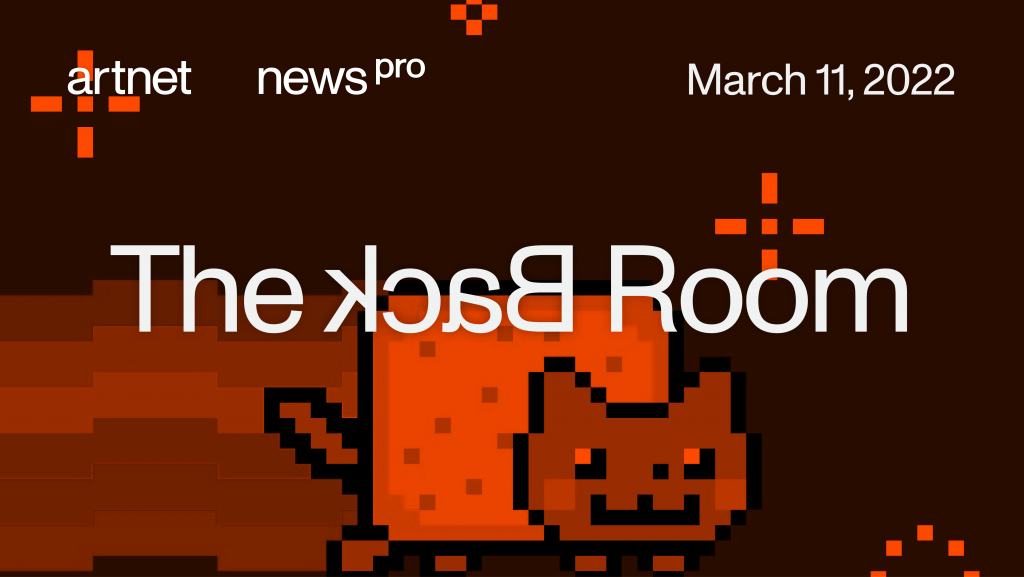
This week: the NFT market’s old-school structure, Sotheby’s latest youth-marketing ploy, the Met’s landmark deaccession, and much more.

Tim Schneider

Every Friday, Artnet News Pro members get exclusive access to the Back Room, our lively recap funneling only the week’s must-know intel into a nimble read you’ll actually enjoy.
This week in the Back Room: the NFT market’s old-school structure, Sotheby’s latest youth-marketing ploy, the Met’s landmark deaccession, and much more.—all in an 8-minute read (2,233 words).
__________________________________________________________________________
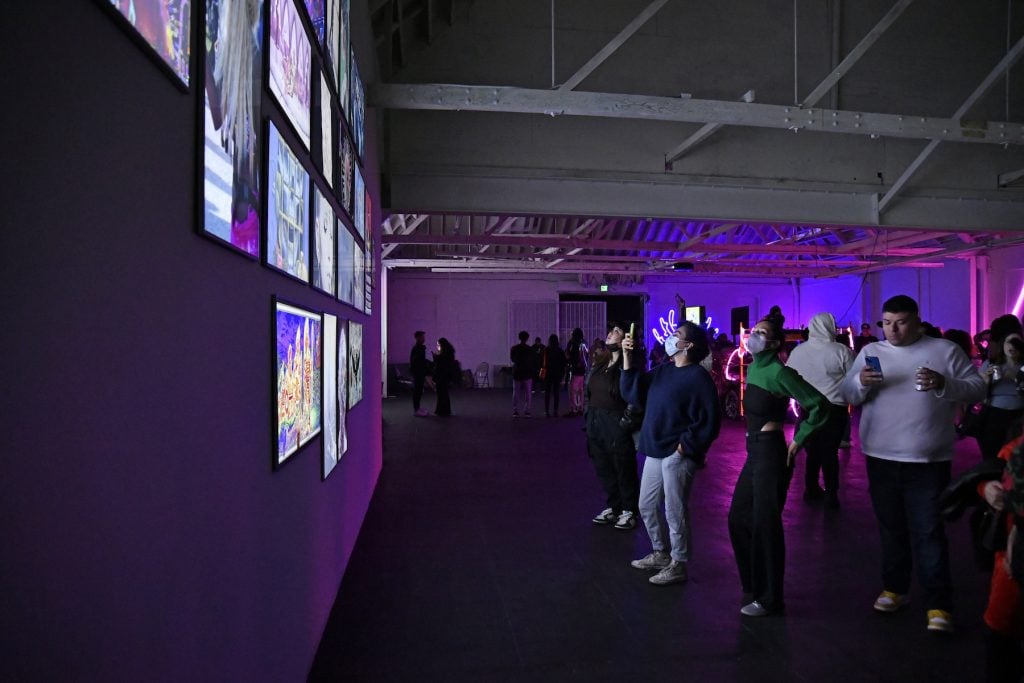
A group of people look at digital NFT art at the FRIEZE Week NFT event for “Season 1 Starter Pack” at Superchief Gallery on February 19, 2022 in Los Angeles, California. (Photo by Michael Tullberg/Getty Images)
One of the central questions about NFTs has been whether their disruptive technology and ethos of democratization would lead to more equitable results than in the legacy art market. Well, a rigorous study of the major NFT platform Foundation mostly answers with a resounding, “Nope, not really.”
Published in the journal Scientific Reports, the research was conducted by Barabási Lab, a team of artists and data scientists studying complex networks. The co-authors used publicly accessible blockchain records to map every transaction that took place on Foundation during its first five months post-launch.
What emerged was an empirical recipe for market success as a crypto artist, which I parsed at length in this week’s Gray Market. Below is a summary of its five key ingredients. Most will taste very familiar to art-market veterans…
Barabási found a clear and lasting “first-mover advantage” for crypto artists on Foundation. Artists who joined earlier sold more NFTs on average, and at a higher average price per NFT, compared to their counterparts who arrived later—no matter what “earlier” and “later” meant specifically.
The “initial adopters”—the first 2.5 percent of artists to join Foundation, between January 21 and February 22—out-earned the “early majority” artists—the 13.5 percent who joined between February 23 and March 10. But the early majority, in turn, also out-earned the later “majority,” who in turn out-earned the “laggards,” the final 16 percent of artists to join during the sample period.
Sell-through rate and median selling price followed the same step-by-step descent. The former gradually dropped from 74 percent in the initial-adopter phase, all the way to 13 percent in the laggard phase. The latter declined from $1,046 per initial-adopter NFT, all the way to $688 per laggard NFT.
Like Twitter or Instagram, Foundation allows users to follow artists on its platform to get notifications about their activity, including new NFT drops. Yet Foundation is only a niche within a niche of the crypto space compared to Twitter itself, which has become the headquarters of crypto enthusiasts in general and crypto artists in particular.
But the data reinforces the adage that “niches get riches.” An artist’s online presence elsewhere is nice. But unless they can port it over to Foundation, their success on the platform will be limited.
Artists who increased from 100 Foundation followers to 1,000 Foundation followers were likely to experience a 10X increase in earnings—a windfall only achievable if they increased from 100 Twitter followers to 10,000 Twitter followers (i.e. an order of magnitude more.)
As an “open” platform, Foundation allows artists who have already joined to invite new artists on board. But while this democratization of opportunity gels with the crypto discourse, sales results indicate that success is largely predetermined by artists’ relationships.
Since every Foundation artist’s profile page includes an “invited by” tag, Barabási and his team were able to map each of the 640 “artist clusters” that sprouted on the platform in its first five months.
Data showed that some artist clusters dramatically outperformed others—and that new artists fared about as well (or as poorly) as whoever invited them. The “richest” and “poorest” clusters consistently did much better (or worse) than a randomized reference cluster in terms of sales value, sales volume, average selling price, and follower counts on Foundation and Twitter.
Artists are responsible for setting their own prices on Foundation. Even if a new work fails to attract bids at its initial asking price, the artist can re-list it at a lower price. (Foundation allows works to be offered for private sale or public auction; in the latter case, a 24-hour countdown clock begins when a bidder agrees to meet the listed reserve price.)
Data shows that this system hybridizes a truly free market and the price-controlled gallery sector: artist’s selling prices often varied significantly from NFT to NFT—but also tended to stay within a stable range defined by their starting reputation level.
The study found that reputation has a similar impact on work-to-work selling price, mean selling price, sales volume, maximum earnings, and more—all of which mutually reinforce. Call it crypto predestination, with artists’ odds of success mostly locked in before they mint their first NFT.
Although data showed high-reputation artists attracting new bidders at twice the rate of medium- and low-reputation artists, the three groups attracted new buyers at an “indistinguishable” rate.
This means NFTs by high-reputation artists tend to be acquired over and over again by a few passionate collectors, often at outsize prices driven up by broader bidding. In other words…
The minority of works acquired by top collectors sold for vastly more than the majority of works acquired by everyone else—both market-wide, and among individual star artists.
Of 2,743 NFTs sold by the 180 highest-earning artists, about one-third were purchased by collectors who had previously bought work by the same artist. The roughly $4.5 million spent by these repeat investors made up more than 76 percent of the cohort’s total sales value ($5.9 million).
The same relationship was visible at the single-artist level. Nearly 62 percent of the artist PaulSnijder’s earnings came from just six NFTs acquired by just three repeat collectors. Another 21 works, each purchased by a different buyer, made up the other 38.5 percent of their earnings.
__________________________________________________________________________
Although the study’s findings about the first-mover advantage and the power of follower count provide some hope for crypto artists hoping to bootstrap their way to success, most of its takeaways suggest that a high-quality social network is still the chief mechanism for advancement in crypto art.
By eliminating “gatekeepers” such as galleries, auction houses, and artist agents, then, NFT platforms shift the responsibility for constructing such a network wholly onto artists themselves. If self-promotion isn’t foremost in their skill set, Barabási’s research indicates, reputation might be even more confining in the crypto space than outside it.
____________________________________________________________________________
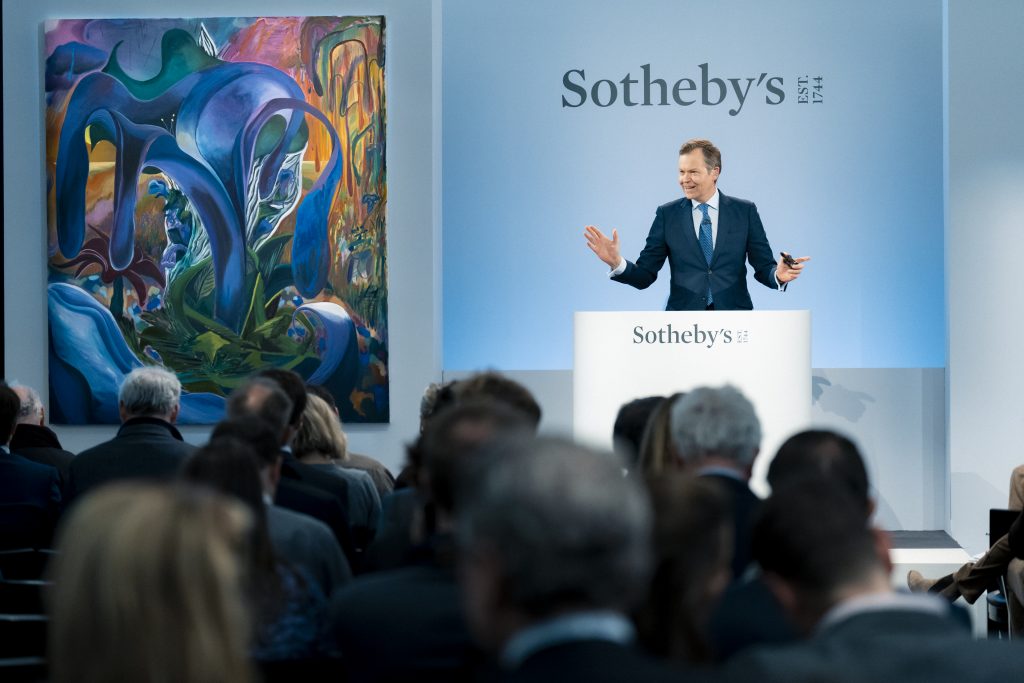
Sotheby’s Oliver Barker with Shara Hughes, Naked Lady (2019). Courtesy Sotheby’s
In the latest Wet Paint, we learned that Sotheby’s paid TikTok influencer Gstaad Guy to build hype around its “The Now” sale in London last week. How? By crafting content faking that he won George Condo’s Green Head Composition (2013) for a cool £2.3 million ($3 million). Sotheby’s, however, confirmed that the painting went to a buyer in Southeast Asia.
Also, an apparent mass exodus of artists from the roster of Jack Hanley turns out not to have been a direct response to his new Beeple show after all. While emerging talent Emily Mullin did leave in protest, per Hanley, five other artists’ names disappeared from the gallery’s website for unrelated reasons, including compliance with the Americans With Disabilities Act (whose vagaries are being weaponized against dealers in a spree of lawsuits—yes, again).
Here’s what else made a mark around the industry since last Friday morning…
Art Fairs
Auction Houses
Galleries
Institutions
NFTs and More
____________________________________________________________________________
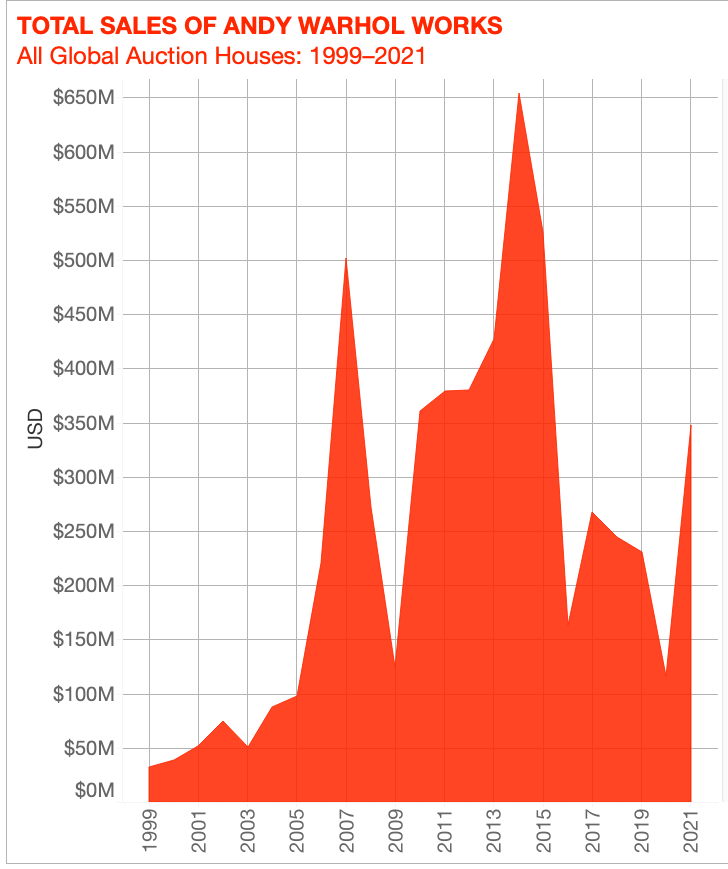
© 2022 Artnet Worldwide Corporation.
Andy Warhol’s auction profile has taken some hits since the early 2010s. But while some insiders insist this perception is warped by his market’s yearslong shift toward private transactions, the fright-wigged one’s works may be regaining momentum under the gavel, too.
For a more nuanced analysis of these twists and turns, click through below for the latest Artnet News Pro Appraisal.
____________________________________________________________________________
“His mother asked me to.”
—Thomas Krens on why he hired a 21-year-old Max Hollein as an intern while serving as director of the Guggenheim, sparking a decades-long mentorship that proved instrumental in Hollein’s eventual ascension to the director’s chair at the Met. (WSJ Magazine)
____________________________________________________________________________
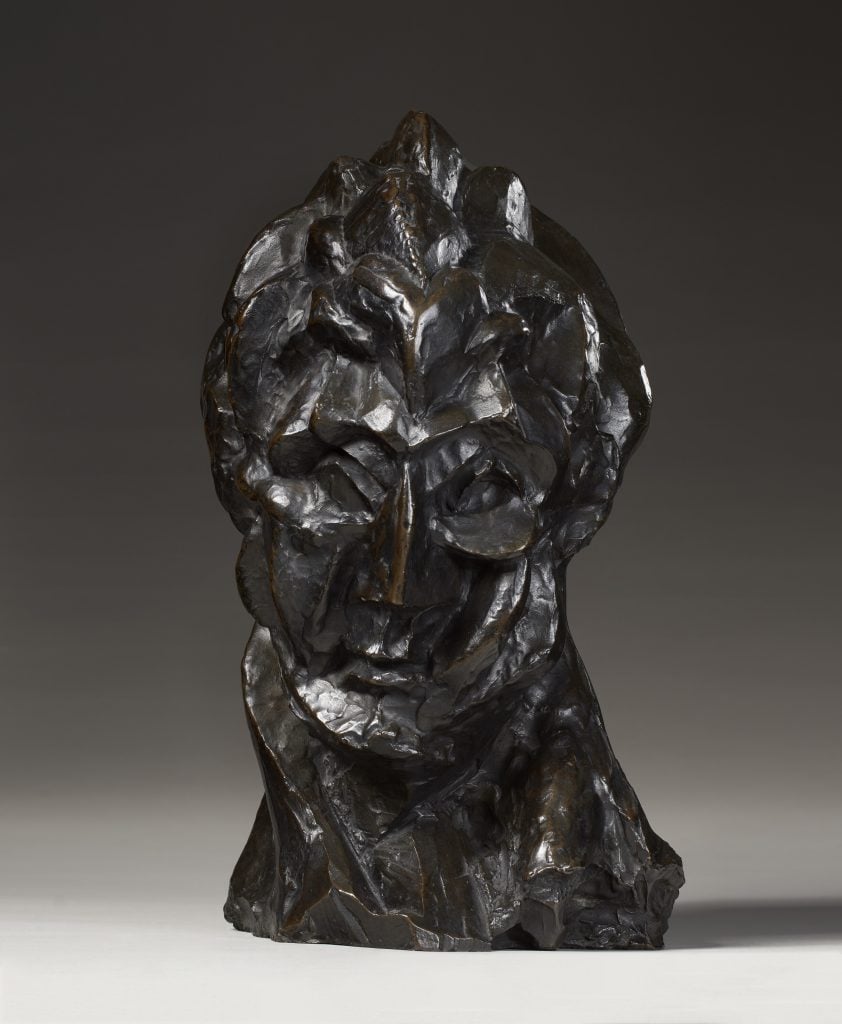
Pablo Picasso, Tête de femme (Fernande) (1909). Courtesy of Christie’s Images, Ltd.
____________________________________________________________________________
Estimate: $30 million
Selling at: Christie’s New York
Sale Date: May (date TBD)
The latest trophy announced for May’s spring auction cycle is also one of the pricier works to be deaccessioned by a museum of late. The Met has officially consigned a bronze cast of Picasso’s 1909 Head of a Woman (Fernande), widely considered the artist’s first Cubist sculpture, to Christie’s. The work carries a $30 million estimate and a house guarantee.
It is also the definition of expendable for the Met, since the museum owns not one but two of the work’s roughly 20 known casts. The sculpture earmarked for Christie’s was donated more than 35 years ago by Florene M. Schoenborn (who died only a few years later); its soon-to-be replacement is part of a Cubist trove promised to the Met by the still-kicking über-patron Leonard Lauder last year.
(The redundancy was a big part of the reason Katya reported six months ago that the Met was mulling a sale of the work, which the museum declined to confirm at the time.)
In a statement, the Met pledged that all sales proceeds will go toward new acquisitions. This seems kinda obvious, since the sale will take place a month after the closure of the ADAA’s pandemic-responsive window allowing member institutions to deaccession for the sake of collection care. But given how controversial deaccessioning can be, it probably doesn’t hurt to be clear!
The Met raises around $15 million from art sales in a typical year. If all goes as planned, its acquisition coffers will soon be about twice as full as usual. I guess flesh-and-blood plutocrats won’t be the only ones to come out of the pandemic richer and readier to spend.
____________________________________________________________________________
With contributions by Naomi Rea.